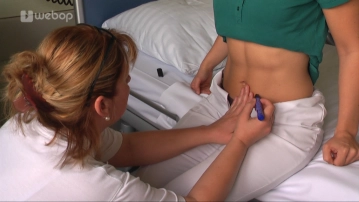In approx. 70% of cases colostomy is performed for cancer of the colon, rectum, anus, or bladder. The stoma is either protective (e.g., to protect a vulnerable anastomosis or in planned neoadjuvant radiochemotherapy, and to protect wound healing, e.g., in decubital ulcers) or permanent (e.g., inoperable rectal cancer). Construction may be through open surgery (usually as part of the treatment of the underlying disease) or laparoscopic operation (especially before definitive surgery).
Indications include:
- Rectal cancer
- Anal cancer
- Sigmoid diverticulitis.
- Crohn disease, ulcerative colitis
- Anal fistula, anal abscess
- Injuries (e.g., impalement injuries, pelvic fractures, iatrogenic)
- Anal atresia
- Decubitus ulcer
- Neurological disease
- Fecal incontinence
- Decompression ostomy
- Protective stoma
- Rectovaginal/rectovesical fistula
- Anastomotic failure
